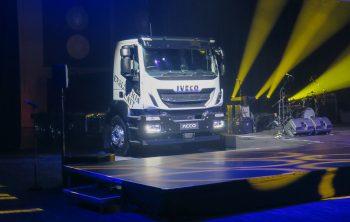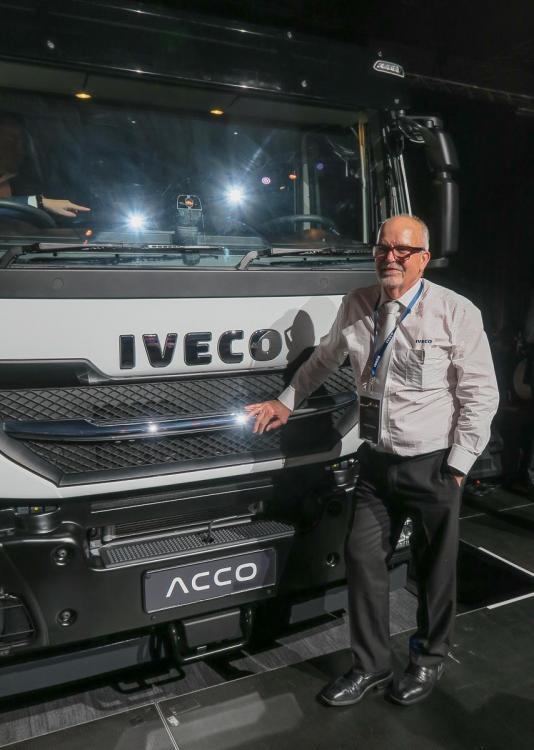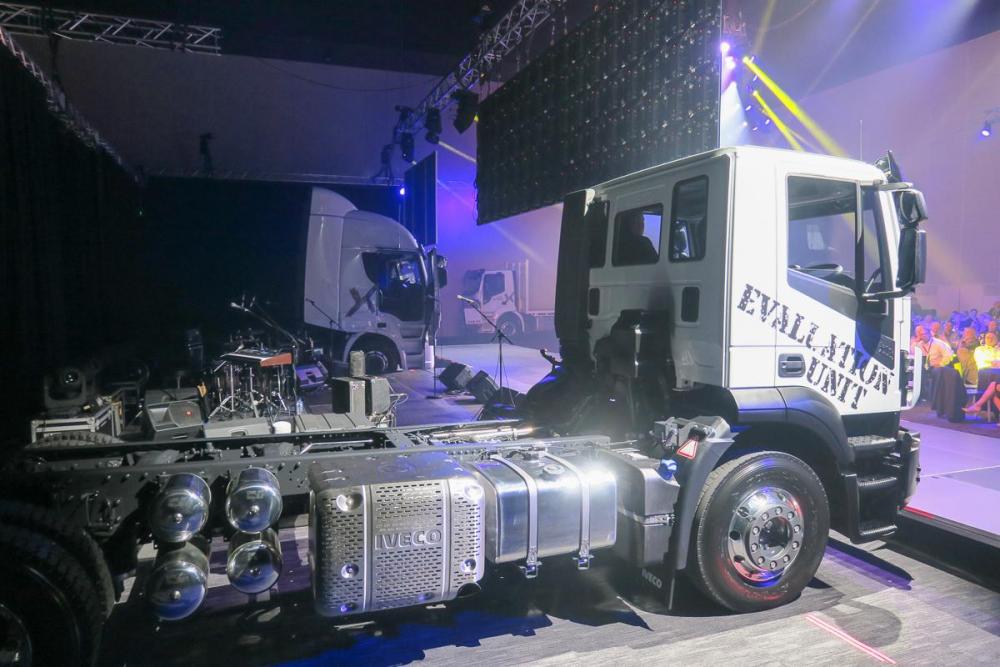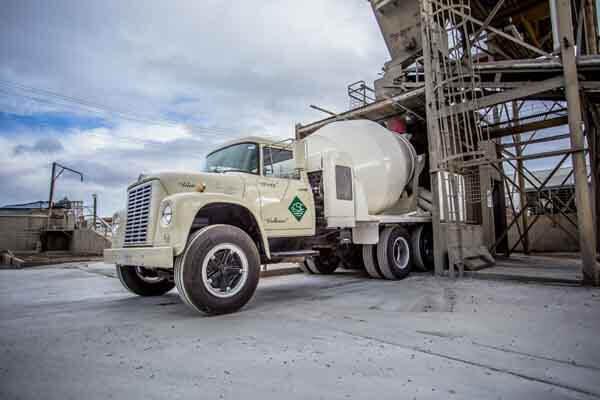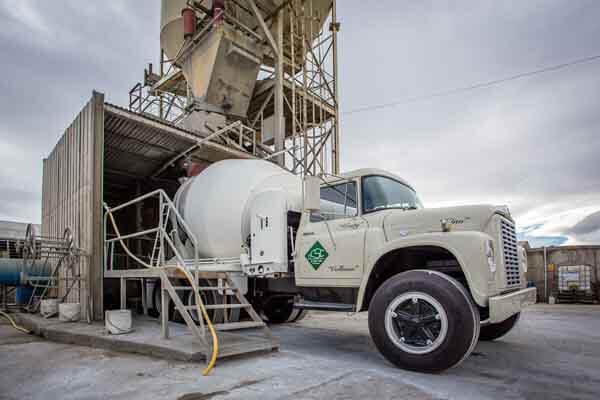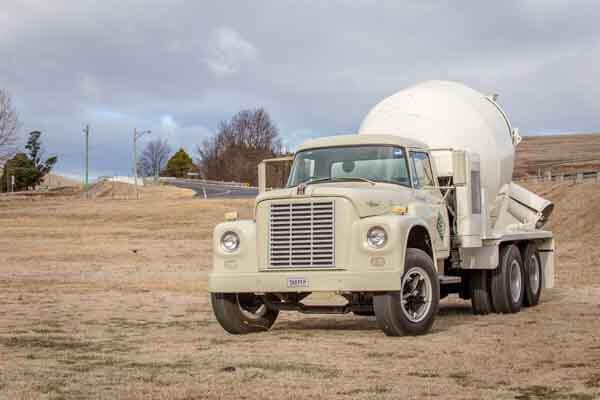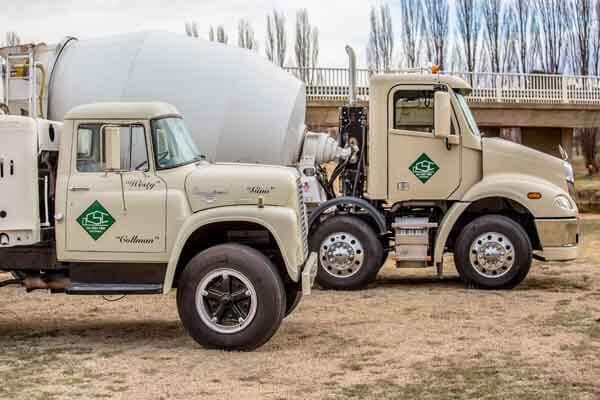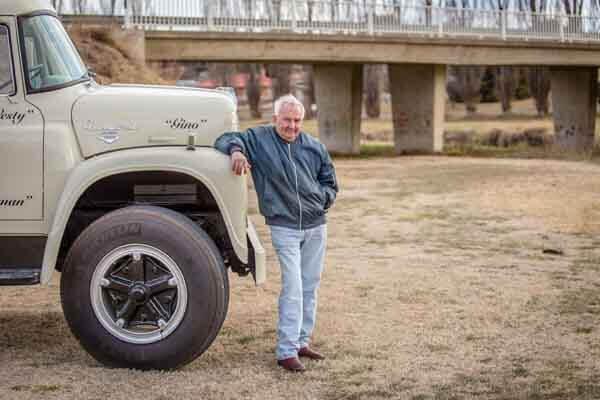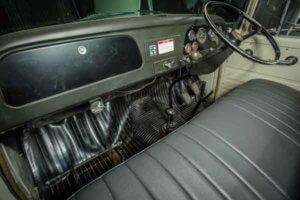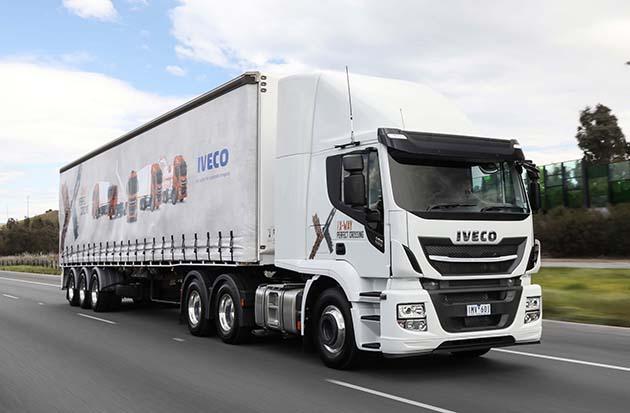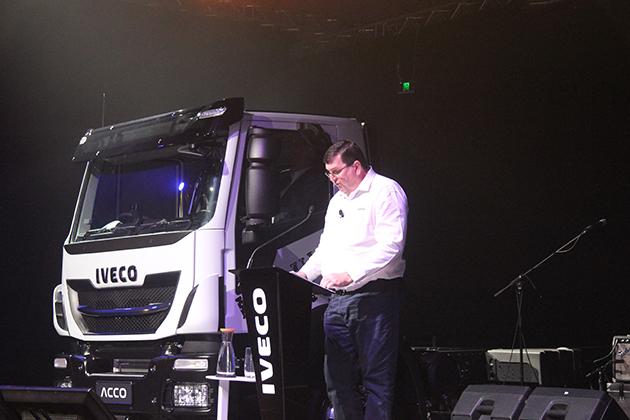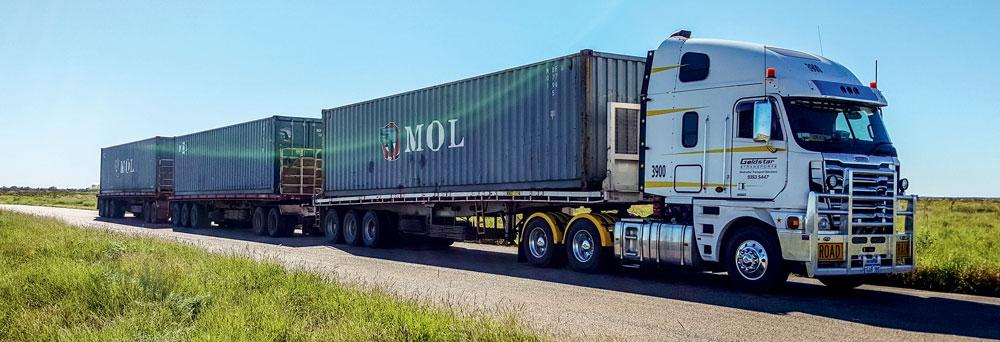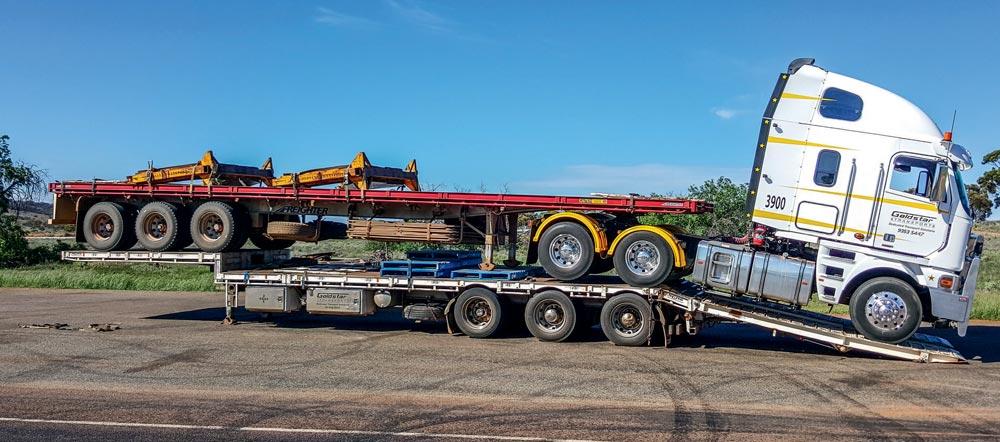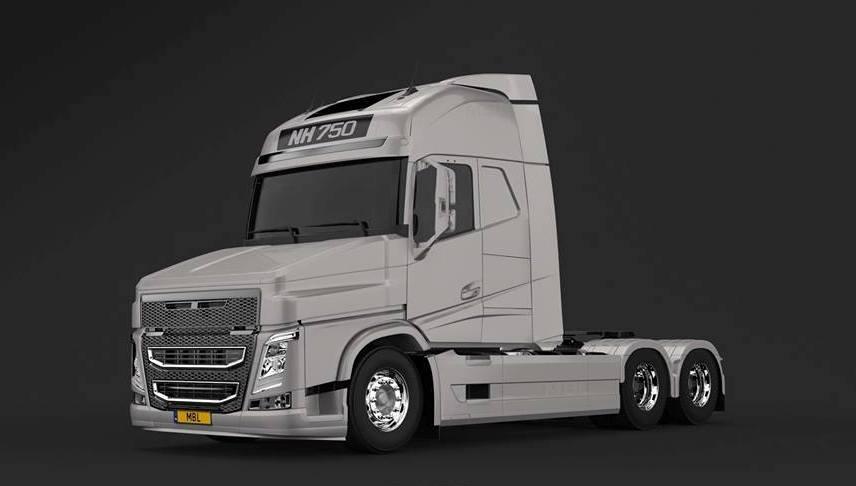
kscarbel2
Moderator-
Posts
18,889 -
Joined
-
Days Won
114
Content Type
Profiles
Forums
Gallery
Events
Blogs
BMT Wiki
Collections
Store
Everything posted by kscarbel2
-
The tension rises at Ford Michael Martinez, Automotive News / October 15, 2018 Dealers wonder: Where's the company headed? DETROIT — Ford Motor Co. says it has a plan under CEO Jim Hackett to improve the automaker's profitability and competitiveness. But Ford has had a tough time getting others to understand and gain confidence in the early stages of Hackett's companywide restructuring. Investors pushed shares of the company below $9 last week to their lowest closing price since 2009, when most of the company's assets were in hock and the industry was only starting to recover from the recession. Dealers hope to finally hear more concrete details at a meeting this week that will be Hackett's first time addressing the company's broad retail network in person. "There's been a lot less exposure to senior management," said Jack Madden, owner of Jack Madden Ford in Norwood, Mass. "There's just not enough information flowing down to dealers about where the company's headed." Meanwhile, more turmoil is creeping into the company's ranks after Hackett told Ford's 70,000 salaried workers around the world that the $11 billion restructuring will include job cuts, while giving no specifics on numbers and only a vague idea of how or when. Ford is calling changes to its employment structure an "organizational redesign" and says it could take months to complete. Hackett is no stranger to layoffs — he axed thousands of employees at his former company, Steelcase, including the best man from his wedding — but stretching out the process, instead of announcing the cuts all at once, threatens to sink morale and create an uneasy, disillusioned work force, experts say. "The approach they've taken can create a lot of anxiety and stress for their employees, particularly heading into the holiday season," Chris Zatzick, an associate professor of management and organization studies at Simon Fraser University in British Columbia, told Automotive News. "To have that uncertainty and not know what's going to happen in the new year can be quite impactful and can potentially lead to employees looking for other jobs or withholding effort." Ford argues the approach gives managers throughout the company more power to shape their departments, flatten command chains and cut out bureaucracy. They wanted to get ahead of potential rumors that would arise when workers would see their team leaders pulled into meetings — which they call "design sessions" — with higher-ups. "It's really about redesigning the business," Ford spokeswoman Karen Hampton told Automotive News this month. "An outcome of that is that there's likely to be reductions. The real purpose is to change the way we work." Paring back its salaried ranks is the latest shake-up under Hackett, who replaced Mark Fields in May 2017. Hackett seeks to drastically change the way the 115-year-old automaker is run, developing new vehicle architectures, redesigning its product lineups and shortening its order-to-delivery process. Its North American product team, for example, has taken over the 11th floor of Ford headquarters for weekly, daylong meetings examining the profitability of each nameplate one by one. And last week, Ford announced a seismic shift to its advertising strategy, saying that BBDO would replace WPP as its lead creative agency. WPP, which has worked with the automaker since Henry Ford was president 75 years ago, will retain some work as part of a new multiagency model. None of the moves have impressed Wall Street. Investors have raised concern over Ford's financial outlook since the automaker in July cut its full-year profit forecast and canceled an annual investor day because it didn't have enough details to share. Looking for direction Ford communicated the impending cuts to salaried employees through a video message that was met with confusion by some who struggled to understand its meaning. Ford insists the message was not about job cuts and said employees have appreciated the way it is handling the news. "In Ford's history, we have streamlined organizations but we rarely removed work, causing each team member to have to do more with less," Hackett said in the video, according to a transcript Ford provided. He told employees the upcoming changes would be made using "a cascading process that will involve many of you" and that they will work to eliminate "low-value" tasks. "While redesigning the organization is important and it's necessary work, it's not going to be easy," he said. "But it is fundamental to us becoming the business we need to be." Denise Giraudo, a partner in law firm Sheppard Mullin's labor and employment practice group, said more employers are starting to communicate impending job cuts earlier in the process. "We tend to tell our clients more notice is better," Giraudo said. "It does put the employees in limbo, but it also allows them to prepare for a possible layoff, look for different positions and prepare themselves monetarily." The announcement is a departure from how Ford and Hackett have handled similar actions. While CEO of Steelcase, Hackett eliminated around 12,000 jobs as the company transformed from a traditional furniture maker to embracing new open-office designs. He was known for personally meeting with affected employees and helping them get back on their feet. During Fields' last week as CEO in 2017, Ford said it would ax 1,400 salaried employees in North America and Asia through voluntary early retirement and special separation packages. It provided details into what departments would receive the buyouts and said decisions would be made within four months. Although the latest changes are likely necessary, the manner in which Ford notified employees could damage morale, according to Carol Olsby, a human-resources consultant and author. "In an absence of any information, it's stressful," she said, noting the news could have a significant ripple effect on Ford's supply chain and the communities where its workers live. "People are going to be looking for more direction from the company." ‘The right medicine' Ford's dealer network also is eager for more direction from Hackett. He and his team will answer their questions this week at Ford's national dealer meeting in Las Vegas. The company expects 4,000 to 5,000 dealers and dealership employees to attend. Over 28 hours, they'll hear from executives; see new products, including the next-generation Escape and Explorer; preview accessories for upcoming off-road utilities; and get to drive or ride in vehicles such as the upcoming Ranger midsize pickup and the GT supercar at the Las Vegas Motor Speedway. Retailers will hear about Ford's sales strategy for its newest products. And they'll get the first glimpse of an advertising campaign debuting in the fourth quarter that's expected to use the slogan "Ford Proud." "It's the right medicine at the right time," Rhett Ricart, CEO of Ricart Automotive Group in Groveport, Ohio, and a Ford dealer council member, said. "I think it will be a huge jolt for dealers' attitudes." .
-
-
GAZ Press Release / September 19, 2018 .
-
GM's 2.7-liter turbo engine is in the wrong truck Richard Truett, Automotive News / October 10, 2018 We all knew General Motors was taking a big chance slotting a four-cylinder engine in the 2019 Chevrolet Silverado pickup. There would have to be a very compelling reason for truck buyers to give up either two or four cylinders and step down from a V-6 or a V-8. But now that we know the fuel economy ratings for the Silverado's new 2.7-liter four-cylinder engine are 20 mpg city, 23 highway and 21 combined, it is hard to see what marketing types call the "why buy." When Ford introduced the 3.5-liter twin-turbo EcoBoost V-6 in the F-150 in 2011, the compelling reason was tire-smoking performance combined with the ability to haul an enormous load. And if the driver kept his foot from pressing too hard on the accelerator -- which limited the use of the turbochargers -- good fuel economy could also be had. Despite endless chest-beating from Ford's hyperactive public relations department at the time, drivers weren't going to get Eco and Boost at the same time, but they could get both if they learned how to drive the truck properly. No other truck offered that kind of flexibility. Ford successfully convinced legions of buyers to pay a premium for a smaller engine, but I am telling you flat out right here and now that GM will fail to do the same with the new 2.7-liter, which costs more -- a lot more -- than the 4.3-liter V-6 that remains available in the 2019 model. Here are the numbers: The basic 2019 Silverado Work Truck starts at $29,795 and comes equipped with the ancient but trusty 4.3-liter V-6. The four-cylinder engine is standard in the 2019 Silverado LT, which starts at $38,395 -- $8,600 more than the Work Truck. (Neither price includes shipping.) Now, not all of that price difference is related to the engine. The equipment levels vary in the two trims. The 2.7-liter has a new eight-speed automatic transmission, while the 4.3-liter V-6 soldiers on with an old six-speed automatic gearbox. The fuel economy on the 2019 4.3-liter version of the Silverado has not been EPA rated, but the 2018 Silverado with the same powertrain -- and lot more curb weight -- got better highway fuel economy than the lighter 2019 model with the 2.7-liter. The 2018 V-6 Silverado delivered 18 mpg city, 24 mpg highway and 20 combined. It only stands to reason that the 4.3-liter powertrain in the 2019 Silverado will get better fuel economy than last year's truck since the new model sheds up to 450 pounds. Now here's the clincher: A small engine in a large vehicle can be -- and often is -- just as thirsty as a larger engine in the same vehicle if it has to work hard all the time. The advantage here usually goes to the larger engine. And there is precedent for this. Ford learned a painful lesson in what is called "powertrain matching" early in the EcoBoost rollout, when late in 2011, it offered a 2.0-liter four-cylinder in the Explorer crossover. It was a dog that didn't sell because the 240-hp, 2.0-liter engine had to work so hard to move the 4,500-pound light truck that it neither provided good performance nor good fuel economy. Ford engineers learned they had to do a better job matching an engine's torque and horsepower output to the vehicle's weight, aerodynamics and duty cycle. The Explorer's 2.0-liter engine was replaced by a 2.3-liter at the end of 2015 rated at 280 hp. Highway fuel economy remained the same, at 27 mpg, with the bigger engine. Automakers don't release fuel economy results for vehicles as they are towing heavy loads. Indeed, there is no EPA test for that. But I can see the fuel economy figures for the Silverado's 2.7-liter engine careening down Davis Dam like a semitruck with overheated brakes when a customer hooks the Silverado up with a heavy trailer. GM says the 2.7-liter turbo, four-cylinder engine develops more torque and horsepower than the 4.3-liter V-6, which is true. But that makes me wonder why GM just didn't offer a new, lighter, more modern V-6 to replace the 4.3. The company's 3.6-liter V-6 would have been an excellent choice for the Silverado. All this is not to say GM won't have a strong chance to outright own the fuel economy crown for full-size trucks. Next summer, the Silverado will get a 3.0-liter six-cylinder turbodiesel engine that is widely expected to deliver over 30 mpg on the highway. So here's the bottom line: The new 2.7-liter engine, loaded with all sorts of technology to boost fuel efficiency and performance, is in the wrong truck. The midsize Chevrolet Colorado is where the 2.7-liter engine will shine, delivering fuel economy and performance along with the ability to haul heavy loads. I'll give the four-cylinder exactly one year in the Silverado before it fades into the Colorado and becomes a big success.
-
"People should and do trust me" - Hillary Clinton
kscarbel2 replied to kscarbel2's topic in Odds and Ends
https://www.theepochtimes.com/spygate-the-true-story-of-collusion_2684629.html https://services.epoch.cloud/public-labs/files/spygate.jpg -
Loving the Loadstar - Cooma Sand and Concrete
kscarbel2 replied to kscarbel2's topic in Trucking News
The Loadstar was a backbone in America's commercial trucking history. -
Confidence for the long haul with Freightliner Argosy
kscarbel2 replied to kscarbel2's topic in Trucking News
I would take pleasure in having my company represented on the roads of America with a fleet of Argosies. -
Confidence for the long haul with Freightliner Argosy
kscarbel2 replied to kscarbel2's topic in Trucking News
Great truck....in my opinion. Always a pleasure to drive one. -
All New Acco Unveiled Diesel News Australia / October 2018 A presentation by Iveco to customers, dealers and media this week has seen the all new Acco unveiled in Melbourne Exhibition Centre. This is not a revamp of the current truck, but a ground-up redesign of the whole vehicle. The Acco is a model which has been through many iterations and variants in the past. Originally designed in 1952 by International Harvester as an army truck, it saw its last major redesign way back in 1972. Since then it has been modernised and updated at regular intervals. It has kept up with the introduction of modern technology, but with the advent of a Euro 6 engine and with a higher level of safety systems needing to be fitted, the time for a rethink was required. It is quite a rethink with virtually every component being new to the Acco. One of the fundamental elements behind the design has been to ensure the new Acco can match or surpass its predecessor in many of its specifications, dimensions and performance. The garbage industry has almost standardised on the Acco over the years, so the side-loader and compactor makers need to work from a matching platform. The new Acco does now include many more components from the global Iveco catalogue, but will still be manufactured in the Iveco plant at Dandenong, in Melbourne’s East. Currently the body panels of the truck are pressed in the plant before assembly, in the future, the body panels will be imported from the Iveco cab plant in Europe, before assembly here. There’s a change in the engine as well. The Acco will no longer rely on the Cummins it has traditionally used and is transferring over to an Iveco Cursor 9 SCR Euro 6 engine with between 310 and 360hp available and 1300 and 1650 Nm of torque. Emissions control is handled using Iveco’s Hi-eSCR system. The Allison Generation Five 3200 Series will continue as the Acco’s 6-speed fully automatic transmission. By moving to a state of the art platform, the Acco will now be able to fit, as standard, Adaptive Cruise Control (ACC), Anti-lock Braking System (ABS), Electronic Braking System (EBS), Advanced Emergency Braking System (AEBS), Electronic Stability Program (ESP), axle load indicators, electronic battery cut-out, L.E.D daytime running lamps and rear L.E.D lights. The model unveiled this week is one of a handful of evaluation trucks Iveco are building to fine tune the new Acco’s design. These will be fitted out by a selection of garbage body builders, who can fit their equipment to the truck and give feedback on the tweaks needed in the design to retain continuity for truck maker, body builders and end customers alike. One of the important factors which has led to the Acco’s pre-eminence in the garbage game has been its manoeuvrability in the tight confines of the suburban streets where it spends most of its working life. Chassis dimensions are the same as on the current Acco and wheel cut has been improved, now up to 52 degrees. By adapting the Iveco X-Way cabin, the Acco now has a thoroughly modern European style cab with its improved visibility, comfort and easy of entry and exit. The electronic architecture will enable the Acco to be fitted with all the latest electronic equipment as it comes along in the future. The Acco is an institution in the Australian trucking industry, an icon of Aussie ingenuity and ability to adapt componentry from all over the world to make a truck which is unique to Australia. This new design seems to be continuing the same tradition, it is simply adapting the componentry from a different set of sources. .
-
Warren Caves, Power Torque Magazine / October 2018 If you started working for Cooma Sand and Concrete today as a driver in the company’s latest truck, you would be treated to such luxuries as a Cummins ISL 9.0-litre, 360 hp diesel engine, matched to an Allison automatic transmission and with heated power mirrors, electric windows and effective cabin insulation to keep your working day at an audibly acceptable level. Add to this spec air suspension, an FM radio, EasyRider 11 air suspension seats, tilt and telescopic steering wheel adjustments and LED dash lights, all of which are contained in the latest Freightliner CL 112, low weight, high strength aluminium cabin. Had you landed a job as a driver with Cooma Sand and Concrete back in the early seventies, you probably would have been handed the keys to one of its two 1967 International Loadstars. With this truck you would have been treated to a 392 cubic inch V8 petrol engine, delivering a whopping 191 hp @ 3600 rpm, with a 5X3 transmission (five speed main gearbox and a three-speed joey box) operated via the twin gearsticks. Fortunately, all that cog-swapping while trying to keep the 20.4 tonne gross weight truck moving would keep you warm, as there was no heater or demister to keep the windows from fogging up on those cold alpine runs. The mirrors would also constantly fog up, unless you were game enough to wind down the windows in sub-zero temperatures to clear them with that oily rag from under the sprung bench seat, so luxuriously covered in vinyl. It wasn’t all doom and gloom though. In the summer I’m sure you would be toasty warm from the ambient day-time temperature blending together with the heat emanating from the floor pan and firewall, devoid of any real insulation properties. Ahhh, the good old days! Gino Revelent, the founder of Cooma Sand and Concrete, started out working for Ready Mix Concrete back in 1963, carting sand to the Cooma concrete plant, until the closing of the plant in 1971. Gino then took a lease up on the plant in early 1972 and ran it until 1978. The site of Cooma Sand and Concrete was built by Gino in 1979, and this is still the current base for the company’s operation today. Shortly thereafter, Gino opened another batch plant in nearby Jindabyne to cope with demand. Mobile batch plants were also widely used during this time, both within the local alpine areas and further afield. Gino’s son Marco Revelent is today the company’s general manager and recalls that when setting up the Jindabyne plant it financially stretched Gino quite a bit at the time. “The plant was successful for a while, until competition moved into town in the form of another batch plant operated by Boral. Unfortunately, Jindabyne was only ever going to be a one-plant town, so the operation eventually wound up,” Marco explained. Marco took on the role of general manager after the passing of Gino Revelent some 11 years ago. The business currently operates a fleet of six agitator trucks, and one tipper and dog combination. Two of the agitator trucks are fitted with quick-release bodies, allowing the fast swapping of bodies from agitator to tipper, to water cart, to prime mover. Marco says that the design allows fast and efficient transition of equipment to suit demand, and, with two operators who know what they are doing, the body swap can be accomplished in as little as 15 minutes. Adding to the agitator fleet is the Freightliner CL112 8X4 truck, which was purchased through Chris Smith of Stillwell Trucks in Milperra six months ago. “We have purchased our last three Freightliner agitator trucks from Stillwells and we seem to purchase a new truck about every two years,” said Marco. “The 8X4 configuration on Freightliner’s own Airliner suspension has the perfect articulation we need for the sites we regularly go to. Other suspension systems we have used in the past, like camelback springs, don’t seem to yield the same level of articulation when the going gets rough. The 7.0-cubic-metre capacities of the barrels are well suited to our particular rural operation, and frontal vision is also excellent,” he added. With a GCM of up to 40,000 kg and a light tare weight, thanks in part to the aluminium cab design, the CL112s are a solid choice for those wanting to maximise payloads without going down the mass management or PBS pathways. “We have worked on major freeway and road projects throughout the state on a contract basis, where we supply our trucks and drivers, who stay away for the contract period. We also do a lot of work locally and in the ACT,” said Marco. Wanting to show how the company and concrete transport in general has progressed over the years, Marco wanted an old Loadstar to remember his father’s early days in the business. While this truck featured here is not one of the original company trucks, it is of the same specification. “I did locate the original truck, but it was way too far gone in terms of rust to even bother restoring. This Loadstar was purchased from Queensland, and to get it to where it is today it only needed some minor rust repairs and a paintjob. We also did a carby overhaul and the re-racing of the Joey box, as it kept jumping out of gear,” said Marco. The truck has been painted in the company colours, and the names painted on the sides are in recognition of the company’s early employees, Stan Collman, Westy, and Gino himself. Stan Collman was Cooma born and bred and had great local knowledge. He spent his early days with the company driving the Loadstars and can be seen here in the photos in front of the Cooma Creek Bridge, built with concrete delivered by Stan in one of the Loadstars back in 1974. Marco also recalls his father telling a story of a day when Stan Collman was driving a loadstar tipper with a cargo of very wet river gravel (which one might have said at the time could have been substantially overloaded), when he drew the attention of the “scalies”. With the only available means of weight checking being located at the local railway station, Stan was directed there. At that time there were two ways to the railway station, one went a little further along the road, with a left turn onto the street to the station. The alternative route was not quite as direct as the route suggested by the “scalies,” but it did conveniently pass by the concrete plant. Not surprisingly, Stan took his preferred option and quickly unburdened the Loadstar of its consignment before rolling into the railway station with an empty truck. Marco remembers his father saying, he could hear the yelling nearly a mile away, as Stan was berated for his cunning. Marco is quick to add, “Those days are long gone”. Kenny West or “Westy” was another long-standing employee of some 25 years’ service with Cooma Sand, later buying a truck from Gino and subcontracting to him. Ultimately, ill health forced the sale of the truck, which, interestingly, Gino bought back from him. Westy passed away around 20 years ago. His son, Greg “Bull” West, can be seen in the photos on his behalf. The modern-day truck driver’s environment has changed a lot over the 50 years that are spanned by these two trucks. Comfy air-suspended seats instead of coil springs in the seat base, and complete control over the climate in the cab, make for a much easier day at the office. Drivers of today (myself included) complain that we have it tough, and at times we do, but the challenges are of a different kind. In 1967, concern about how many kilometres per litre you were achieving was not relevant. You just grabbed another bucket of petrol and threw it down the throat of the Holley carby. You thanked your lucky stars that you didn’t tear a rotator cuff trying to steer these heavy, often overloaded trucks, without power-assisted steering, and prayed that the mechanical handbrake held long enough for you to find the truck in the same place where you had parked it. If it’s all the same, I’ll stick to the modern Freightliner thank you. .
-
IVECO launches Australian-built Euro 6 Stralis X-Way range
kscarbel2 posted a topic in Trucking News
Prime Mover Magazine / October 11, 2018 Commercial vehicle manufacturer, IVECO, has launched a Euro 6-rated Stralis X-Way as part of a new range specifically developed for vocational and construction applications. The range is suited to operations in which on-road work may also require a level of off-road mobility IVECO announced this week. These will include 6x4 AD/AT and 6x4 AS prime mover models as well as 6x4 AD/AT, 8x4 AD/AT and 8x4 AS rigids. The prime movers feature GVMs of 25 tonnes and GCMs of 45 tonnes while the rigids range between 25 and 30 tonnes GVM and 40 to 45 tonnes GCM. All prime mover models are equipped with rear 8 bag Electronically Controlled Air Suspension (ECAS) and front parabolic springs. Rigid variants use the same rear suspension. These will include ECAS suspension on the 8x4 models. The 6x4 AD/AT has a mechanical rear suspension option and standard front parabolic springs. Cabin options include a ‘Day’, ‘Sleeper’ and ‘Active Space Sleeper’ for prime movers and rigid models while wheelbase options are 3900 and 4200mm for the prime movers and 5720, 5800, 6300 and 6500mm depending on the rigid model selected. The Stralis X-Way project marks the culmination of a four-year engineering program between IVECO Australia and IVECO’s global engineering centre. This has resulted in models that combine extensive local development with the latest innovative technologies from Europe. New models have undergone extensive on-road testing in Australia and in Europe across a three year period with encouraging results. At the heart of the vehicles are new IVECO Cursor 9, 11 and 13 common rail engines with additional power and torque. Outputs range from 310 hp and 1300 Nm for the entry level Cursor 9 to 510 hp and 2300 Nm for the Cursor 13. The IVECO Cursor 11 and 13 engines benefit from a new turbocharger that provides immediate response at low engine speeds and superior engine braking. Complementing the engine range is IVECO’s new HiTroniX automated transmission. A 12-speed, direct drive unit, it delivers fast gear changes and also has the ability to more efficiently select the correct ratio for the conditions. As well as delivering more efficient vehicle performance, the HiTroniX can achieve an extended life (up to 80 per cent) compared to other AMTs, for durability of up to 1.6 million kilometres leading to lower vehicle cost-of-ownership. For greater flexibility across a range of applications, the HitroniX is equipped with ‘Rocking’ and ‘Creeping’ modes as well as four reverse gears. The Stralis X-Way range will be built in Australia at IVECO’s Dandenong manufacturing facility alongside current generation Euro 5 Stralis AS-L models, the ACCO and the Delta and Graduate bus chassis. . -
Prime Mover Magazine / October 9, 2018 Commercial vehicle manufacturer, IVECO has used the launch event for it’s new Stralis X-Way to also reveal its plans to radically revamp the iconic ACCO range. The new ACCO will be manufactured at IVECO’s Melbourne production facility in Dandenong it announced this week, and will share architecture including the cab with the Stralis X-Way. Available in 6x4 and 8x4 configurations, the new vehicles will be aimed at ACCO’s current vocational applications. For refuse collection applications, IVECO will continue to offer a factory dual control system and is consulting extensively with the waste industry to develop a variety of body mounting and chassis layout options to suit a range of bodies. Assessment vehicles will be trialled over the next nine months with operators including Suez, Cleanaway and JJ Richards. Part of the strategy to use a completely new cab is the space requirements of the SCR Euro 6, Cursor 9 engines that will be used with between 310 and 360hp and 1300 and 1650 Nm of torque. Emission control will be handled via IVECO’s Hi-eSCR system. The engines will be matched to the Allison Generation Five 3200 Series, 6-speed full automatic transmission. Included as standard equipment are Adaptive Cruise Control (ACC), Anti-lock Braking System (ABS), Electronic Braking System (EBS), Advanced Emergency Braking System (AEBS), Electronic Stability Program (ESP), axle load indicator, electronic battery cut-out and L.E.D daytime running lamps and rear L.E.D lights. Operators will also benefit from the new cabin design that offers additional visibility and comfort combined with the easy access the previous generation ACCOs were well regarded for. Inside the cabin the operator is treated to an ergonomically designed workspace, with modern instrument cluster and intuitive dashboard layout. IVECO Australia Business Director, Bruce Healy, said the ACCO was an Australian transport industry legend, and that given its status in the market, IVECO was working tirelessly to ensure a new ACCO would do the iconic nameplate proud. “Developed for the Australian army in the years following World War II, the ACCO is Australia’s first locally-designed and manufactured truck,” said Healy. “To replace a transport legend is no mean feat, so extensive local development has been undertaken in preparation for the next chapter of the ACCO’s product life.” .
-
New Zealand Trucking / October 2018 Back home in Palmerston North, Chris went on a 13-week government course where he was taught warehousing and got his truck licence in a D series Ford with a petrol V8, 5-speed transmission and a 2-speed diff. After gaining his licence Chris worked for Daily Freight doing around town work, before getting a job with Pratt Contracting in Bunnythorpe. “ That was my first job driving big trucks, I had an NL Volvo 6-wheeler and a 6-wheeler trailer. I worked for them for two years then I started working for Elliot ’s Transport in Palmerston North.” After he’d been there a few months the owner, Ridley, asked Chris if he wanted to buy the truck that he had been driving for him. He said no at the time, but a year later bought the Japanese Ford Trader that he used to take vegetables to the supermarkets in Feilding. Chris changed trucks a couple of years later, then after another two years he headed to Southend On Sea in England. “I just decided I’d go and do something different. I sold my truck and was cashed up, I had $20,000 in my pocket – that lasted a month!” Chris says it took him about a month to get a UK truck driving licence and shortly after he was offered two jobs. “One of them was an Eaton crash box, Road Rangery type of thing that I’d never driven before, and the other was a DAF, a synchro, and I got offered both. One was moving tractors and one was moving cardboard boxes. I took the cardboard boxes because it was within walking distance of where I was living, and I didn’t have a car.” After seven months Chris went to stay with a cousin in Sussex and joined a driving agency, doing mainly aircraft freight between Gatwick and Heathrow. While working for the agency one of the jobs was for The Body Shop, leading to eight months of full-time work. “The job was night shift – two drivers, swap bodies on wagon and drag (truck and trailer) and drive home. I found out the first night why I got the job. I had been seen reversing the truck and trailer, and when we got to the destination, the other driver was about to reverse the drag under the swap bodies and says to me, ‘ok, how do I do this?’ I said, ‘I don’t really know, it comes naturally to me’.” When Chris’s time with The Body Shop was nearing its end, the fleet controller suggested he move on to a job with theatre transport company G. H. Lucking & Sons. “I worked for them for two years, moving all sorts of theatre shows.” Chris says most of the outs – when shows are packed up ready to be transported to the next location – were done on a Saturday night. “Depending on how big the show is and when it’s on next, sometimes you have to move straight after the out, and if it was a big out, you’d be working all night and then driving all day. We’d be forever going bobtail or moving empty trailers the length of the UK getting them closer to where the shows were coming out of or going to next.” Chris says the streets and roads are the same no matter where in the UK you are, it ’s just in the bigger populated areas they are a lot busier which makes it more difficult to access some of the theatres. “It’s all relative to how many people are watching you too. At Blackpool you drive up into a pedestrian street and then back ‘ blind side’ around the building and in to the dock door. The building that you back around has the corner cut off it so you can make the manoeuvre. I got there at 5am once in the dark and did it in one, and got back with my second trailer about 9am in daylight when people were everywhere and it took me about 15 tries!” Chris met his partner, Jill Barker [see last month’s issue for her story], when he was working at Luckings, and helped her gain her truck licence too. “While I was at Crawley I met a Kiwi who played hockey for the Penguin Hockey Club in Worthing. I had weekends down there because when I started at The Body Shop I went down to Littlehampton, and he introduced me to Jill.” Being in Littlehampton led to Chris working for Paul Mathew Transport, also theatre show movers. Some of the big shows Paul Mathew was involved with were Phantom of the Opera, Miss Saigon and Les Miserables. “I think they were about 30-trailer moves, which moved every two or three months. We did a couple of the ones on ice too, and Cats was another big one.” Jill says she has tried over the years to get Chris to move away from trucking so they would have more time together. “One time I thought I was successful; we were sitting on the side of the road in France having a cup of coffee, and a Renault truck went past, and he went, ‘ooh, Maaaaaagnuuuuuuum!’ And I thought ‘you’re a truck man, it ’s not going anywhere at all!’ I reckon if you cut him in half he’s got ‘trucker’ written right through the middle of him. I had a couple of tries but he went right back to it again. It ’s his calling, isn’t it?” Chris says his love of trucks dates back to his childhood, when his father worked for Marlborough Transport. “Dad had left trucking but he had friends who were still driving, they used to move the sheep around, and so after school when I was eight or nine I suppose, I would go up to the stockyards and see if any of them were there and if so I’d go for rides with them.” Most of the time Chris and Jill would be working separately, so as they wanted to spend more time together, Chris put an ad in a trucking paper in the UK. “It just said something like ‘two-up team wanting work’. A guy rang and said he didn’t have any work for me, but he wanted to have a chat. A little while later he rang back and said he had some work for us.” Chris says the business was called Lightning Trucks and they contracted to Stage Truck who moved music shows around. In between shifting shows they would move freight. “ The music was normally one driver and one truck. They’d send Jill into little tiny, hard to get to places, and send me somewhere that was really easy. “They didn’t want couples working together and they wanted us to go on different tours and we said no. We only did the one full tour which went for a month, Canadian singer Beck, but we did bits and pieces all the time, going to festivals and things.” Eventually Chris and Jill decided to take a six-month trip to see where they wanted to live. “We landed in Perth, and then spent six months travelling around Australia, New Zealand, and the west coast of Canada. Everywhere we went we said, ‘we like Perth’. I don’t know why, it just felt right.” Jill says travelling with Chris – or as she christened him ‘ Trucker Dundee’ – was all about trucks. “Every town we arrived at we didn’t go straight to all the nice coffee shops downtown, we had to go to the industrial estates like some fricking stalker!” At the end of the trip the couple returned to England and Chris went back to Paul Mathew Transport for about a year while they saved their money and sorted out visas for Australia. “Before we left England I Googled transport companies in Perth and there was one called Sykes that did all sorts, and one called Goldstar,” says Chris. “Once I had my licence in my hand I rang Sykes, but it was a Saturday morning and there was no one there, so I rang Goldstar. The owner answered the phone and told me to come down for an interview right then. We both went, and he said, ‘ The important thing to me is you show up every day and do your day ’s work and come back again tomorrow ’. I started on the Monday, and that ’s the only job I’ve had in Australia.” Chris does long haul work for Goldstar, with a little around town work when long haul goes quiet. “Our main work is moving the infrastructure and production equipment for engineering companies to the mine sites. We move a lot of dongers [accommodation huts] around, and we’ve moved a couple of whole camps between mine sites.” While Goldstar move the bulk of the production equipment, Chris says they contract out all the really heavy haulage. Chris says undertaking work in Australia’s outback requires drivers to be resilient. “You’ve got to do little repairs and change your tyres because there’s nobody out there. If you break down, you’ve got a long wait. One of the jobs I did was to the Tanami Mine site, on the road between Alice Springs and Hall’s Creek. It’s a kind of a short cut but it ’s all gravel road and it’s really crappy. So it took me 22 hours of driving time to do 500kms because of the corrugations in the road.” Chris says he loves moving, so being a truck driver suits him perfectly. “I think a Sagittarian thing is to be moving all the time. It’s not just trucks – I could do a cycle tour or drive a car or a loader or something, I just like moving.” As well as partner Jill, Chris has another love in his life. “ W hile on our six-month trip I saw a Freightliner Argosy pull up and when the driver opened the door the steps came out. That was 10 years ago. I’d never driven one, never looked in one, but I kept asking my boss [at Goldstar] when he was going to buy one. He said he was never going to buy one. It took about four years and then he said he’d get me a demo Argosy for two weeks while my Kenworth T904 was having its engine rebuilt.” Chris says after the Kenworth came out of the workshop the Argosy remained and he continued driving it. “I drove it for about four months, and he asked, ‘how is it?’ and I said, ‘oh, it’s brilliant, it’s really good, but the roof is too low and the bed’s too big’. He didn’t say much then another one arrived, the high cab one, with the smaller two bunks and cupboards and a wardrobe and all sorts, and a 130 ton rating for doing the triple road trains, which was quite a surprise.” His boss told him he’d bought it especially for him, and he was not allowed to leave until it was worn out. Goldstar is a family run operation and Chris says his boss, Sean Carren, is happy to look after his staff as long as they do the job required of them. “I think in the second year I was there I got best-kept truck in the fleet and I’ve got that and the driver of the year award a couple of times. Sean said he pulled up to a traffic light and he looked to the side and there was a truck next to him that looked really nice, the wheels were polished and it looked really good. He thought to himself, ‘I wish one of my drivers would keep their truck like that ’ and it was mine! “And speaking of moving ... as I’ve done the heat of the outback, maybe onward to driving trucks on the ice roads of Canada!” .
- 1 reply
-
- 1
-

-
Freightliner Australia Press Release / October 9, 2018 There has never been a better time to step up into a new Freightliner Argosy, packed with industry leading features. Take comfort in the biggest bunk on the road and the safety of our famous swing out staircase. If that’s not enough we now offer an impressive 4 year / 800,000km extended warranty. Built tough to suit the rugged Australian conditions and with one of the strongest support networks across the nation, the Freightliner Argosy delivers confidence for the long haul. .
-
http://airportjournals.com/ikes-aero-commander/ . .
-
Volvo Trucks Press Release / October 8, 2018 . . . .
-
-
International Trucks Press Release / October 4, 2018 .
-
Mack Trucks Press Release / October 11, 2018 Mack Trucks today revealed the new NH series, a groundbreaking all-new tractor that meets the needs of today's long-haul trucking customers and professional drivers through cutting-edge innovations in efficiency, productivity, safety and uptime. Available in several configurations, including an all-new, 70-inch sleeper, the Mack NH series defines the shape of trucks to come. An available 16-lite MP10 engine with ratings up to 750 horsepower features Mack's patented wave pistons, a unique design that helps burn fuel more efficiently. Fuel is delivered by a proven common rail fuel system with proprietary features that improve fuel delivery precision, cut weight and reduce noise. .
-
https://www.flyingmag.com/john-travolta-donates-his-boeing-707-to-australian-museum
-
Reuters / October 11, 2018 U.S. President Donald Trump warned on Thursday there was much more he could do that would hurt China’s economy further, showing no signs of backing off an escalating trade war with Beijing. “It’s had a big impact,” Trump said. “Their economy has gone down very substantially and I have a lot more to do if I want to do it. “I don’t want to do it, but they have to come to the table.” However, Trump said the Chinese want to negotiate but he does not believe they are ready and he told them so. He blamed previous U.S. presidents for allowing China to pursue unfair trade practices and said he had to tell Beijing, “It’s over.” “They lived too well for too long and, frankly, I guess they think the Americans are stupid people. Americans are not stupid people. We were led badly when it came to trade.”
-
A classic Connie should be restored and flying, a symbol of America's aviation history, not broken apart to be a cocktail lounge. .
BigMackTrucks.com
BigMackTrucks.com is a support forum for antique, classic and modern Mack Trucks! The forum is owned and maintained by Watt's Truck Center, Inc. an independent, full service Mack dealer. The forums are not affiliated with Mack Trucks, Inc.
Our Vendors and Advertisers
Thank you for your support!



